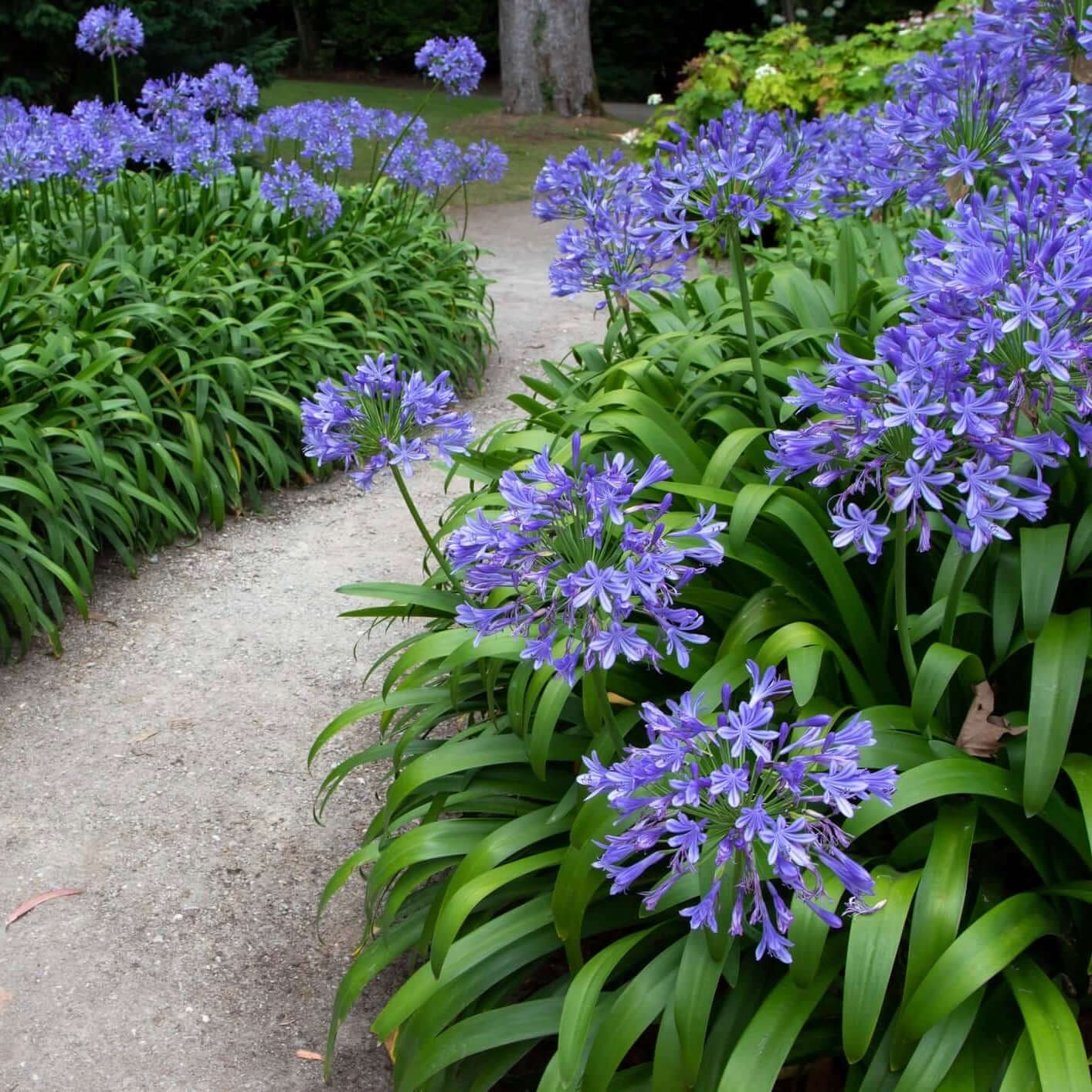How to Plant and Maintain Agapanthus in Your Garden
Wiki Article
Mastering the Art of Agapanthus Care: Important Actions for Healthy Development and Lively Blooms
In the realm of horticulture, the growing of agapanthus stands as a gratifying endeavor for those that look for to support these elegant flowering plants. From picking the appropriate selection to grasping trimming techniques, the journey towards cultivating prospering agapanthus plants is multifaceted and holds the key to unlocking the full possibility of these organic gems.
Choosing the Right Agapanthus Selection

When selecting the ideal Agapanthus selection for your garden, think about aspects such as climate viability, flower shade, and growth routine. Agapanthus, commonly referred to as Lily of the Nile or African lily, is available in a range of shades ranging from shades of blue and purple to white. Choose a blossom shade that matches your existing yard scheme to create a harmonious landscape. Furthermore, consider the environment in your region to ensure the Agapanthus selection you select can prosper in your specific conditions. Some varieties are much more tolerant of cold temperature levels, while others choose warmer climates. Understanding the development habit of different Agapanthus varieties is essential for correct positioning within your garden. Some ranges have a clumping development practice, perfect for containers or borders, while others have an even more dispersing nature, appropriate for ground cover or mass growings. By very carefully reviewing these factors, you can pick the best Agapanthus range to improve the beauty of your garden.
Suitable Planting Problems
Thinking about the optimum environmental demands is vital for successful Agapanthus growing. Agapanthus thrives in well-draining dirt with a somewhat acidic to neutral pH degree. When planting, choose a location that obtains full sunlight to partial color. In hotter climates, providing some afternoon shade can stop scorching of the fallen leaves. Agapanthus plants are delicate to chilly temperature levels and should be shielded from frost throughout winter season months.To ensure healthy growth and lively blossoms, plant Agapanthus light bulbs at a depth of about 2-4 inches and room them 8-12 inches apart. Mulching around the base of the plants helps maintain dampness and subdues weed development.
Watering and Feeding Tips
Keeping appropriate moisture levels and supplying important nutrients are essential components in the treatment program for Agapanthus plants. When it comes to watering Agapanthus, it is crucial to strike an equilibrium. If overwatered, these plants like consistently moist dirt however are at risk to root rot. Throughout the expanding season, water deeply once a week, making sure the dirt is well-draining to avoid waterlogging. In hotter climates or throughout periods of drought, even more constant watering may be required to maintain the dirt evenly wet. Nonetheless, minimize watering in the winter to prevent water logged conditions.Feeding Agapanthus is necessary for advertising healthy and balanced development and prolific blooms. Use a well balanced fertilizer, such as a 10-10-10 formula, in the very early spring as brand-new development arises. Repeat this application every 6-8 weeks throughout the growing period. Prevent excessive fertilizing, as it can result in lush foliage at the expenditure of flowers. Constantly follow the supplier's instructions for correct dilution and application techniques. By adhering to these watering and fertilizing suggestions, you can guarantee your Agapanthus plants grow and generate dynamic, lasting blossoms.
Trimming Techniques for Agapanthus
Pruning Agapanthus plants at the suitable times and with appropriate techniques is essential for preserving their wellness and advertising optimal growth and blooming. The excellent time to prune Agapanthus is in late winter season or very early spring prior to brand-new development arises.For flowered stems, wait till the blooms have withered and afterwards cut them back to the base. This not only cleans up the plant's look yet additionally urges the growth of new flower buds. Deadheading spent blossoms can additionally redirect the plant's power into creating even more flowers instead of setting seeds. Nonetheless, if you intend to accumulate seeds for proliferation, leave some flowers to mature and completely dry on the plant.
Keep in mind to use tidy, sharp tools to make precise cuts and decrease the risk of introducing conditions. Agapanthus. Routine trimming will certainly assist maintain your Agapanthus looking healthy and balanced and cool while making sure a plentiful display screen of stunning flowers
Dealing With Common Parasites and Conditions
After Visit This Link guaranteeing appropriate pruning techniques for Agapanthus, it is essential to resolve typical pests and illness that can affect the wellness and vigor of these plants. One common insect that impacts Agapanthus is the Agapanthus gall midge.Additionally, Agapanthus plants can experience from origin rot if they are grown in improperly draining dirt. By being watchful and taking punctual action versus bugs and illness, you can aid your Agapanthus plants thrive and generate lively blooms. Agapanthus.

Verdict
Finally, grasping the art of agapanthus treatment entails picking the right variety, giving perfect growing conditions, appropriate watering and feeding, suitable pruning techniques, and addressing Visit Your URL typical parasites why not try this out and diseases. By adhering to these vital actions, you can make certain healthy and balanced development and lively blooms for your agapanthus plants. Keep in mind to frequently keep an eye on and keep your plants to advertise their total well-being and long life.To guarantee healthy development and vivid blossoms, plant Agapanthus light bulbs at a deepness of concerning 2-4 inches and space them 8-12 inches apart. By complying with these watering and fertilizing ideas, you can guarantee your Agapanthus plants grow and produce lively, lasting flowers.
One usual pest that affects Agapanthus is the Agapanthus gall midget. Additionally, Agapanthus plants can experience from origin rot if they are planted in improperly draining soil. By complying with these vital steps, you can make certain healthy growth and vibrant blooms for your agapanthus plants.
Report this wiki page